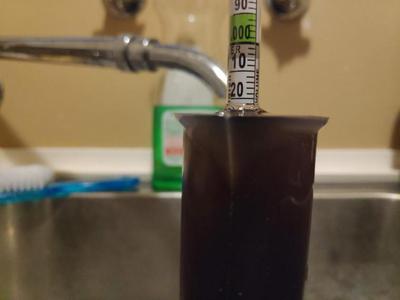How much alcohol is in your homebrew?
I make beer as a hobby. It’s something I’ve been doing for over a decade and throughout the years my beer has improved dramatically. One thing that I really like about beer making is the mathematical detail involved. Recipes are precise to reach certain targets. There are thousands of different ingredients and just as many different ways to use them.
The most frequent question about my beer is: how much alcohol is in it? The alcohol percentage, or Alcohol by Volume (ABV) is given by:
where OG represents Original Gravity and FG represents Final (or Terminal) Gravity. This is a very handy formula and is widely available on homebrewing forums and websites. However, I have never come across discussion or calculation of the uncertainty in this calculation. When I say uncertainty I mean the mathematical version the involves knowing how precisely you know something.
The short answer
If you use a hydrometer to measure both OG and FG, then your ABV precision is
If you use a refractometer to measure OG and a hydrometer to measure FG, then your ABV precision is
The longer, more mathy answer
To determine measurement error when using a calculation, we can use a error propagation technique to determine the error in the final calculation. We can apply this technique to the ABV formula above:
where
The common hydrometer
Hydrometers (as least every one that I have owned) has increments every 0.002 units. This means the precision for hydrometers is 0.002 units.

For the example above I would read measurement as 1.022
Using the error propagation formula above and a
Refractometers
Refractometers are typically use to measure OG and are incrimented at 0.001 units. This means the precision for refractometers is 0.001 units. Refractometers are not suitable for measuring FG and a hydrometer is typically used for this measurement.
Using the error propagation formula above and a
Other setups?
I’m not sure there are other setups for measuring OG and FG on the homebrew scale. Please comment below or tweet at me if you know any. I’m very curious. In any case, they above error propagation formula would hold.
Conclusion
Using a hydrometer you measure ABV with a precision of